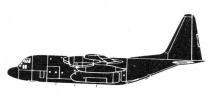Incident Overview
Description
A Cessna 550B Citation Bravo corporate jet, registered OK-ACH, was destroyed in an accident in the area of the Groáer Zschirnstein Mountain. Both pilots were killed. Flight TIE039C departed Prague-Ruzyne International Airport (PRG) at 20:08 on an IFR flight to Karlstad Airport (KSD), Sweden. The copilot was Pilot Flying. At 20:14, while the airplane was climbing to cruising altitude, the copilot asked the captain if she had ever flown a roll at night. Meanwhile, the air traffic controller at Prague cleared the flight to climb to FL260. The flightcrew continued their conversation about performing a roll with Citation Bravo jets. At 20:17 the Pilot Flying rolled the 30ø to the left and immediately 20ø to the right. Prague ATC then instructed the flight to contact Munich ATC. Contact was established and clearance was given to climb from FL260 to FL330. This was confirmed by the crew. At 20:18 the captain asked the copilot if their altitude was high enough to perform a roll. The copilot confirmed that the altitude was sufficient. At 20:19 the flight levelled off at FL270. Five seconds later the nose pitched up to 14ø and a roll to the right was initiated. Within four seconds the airplane was flying upside down. It rolled a further 90ø in the next four seconds. Meanwhile the heading began to change and the nose dropped in an almost vertical dive of -85ø. The computed airspeed increased from about 240 knots at the initiation of the roll to 380 knots during the descent. The flight crew were not able to recover and the airplane impacted a forest. CAUSES (translated from German): The accident is due to the fact that: – The crew attempted to perform maneuvers (roll) that are not planned for in commercial aviation. – The crew lost spatial orientation and subsequently the skill for a controlled recovery from the attained attitude. The following factors have contributed: – The pilots were not trained in aerobatics. – Night-time conditions existed, thereby lacking visual references. – The personal relationship between two pilots led to a lack of professional behavior while working together in the cockpit. – The aircraft was not designed or approved for aerobatics.
Primary Cause
The accident is attributed to a combination of factors leading to a loss of control and subsequent catastrophic failure of the aircraft. Specifically, the crew?s attempt to execute a planned, but not-for-commercial use, maneuver ? a roll ? without adequate training and situational awareness, combined with the challenging night-time conditions and a lack of professional coordination, contributed to the incident. The pilot’s actions, particularly the rapid initiation of the roll and subsequent maneuvers, were not aligned with standard aviation procedures and contributed to the loss of control.The accident is attributed to a combination of factors leading to a loss of control and subsequent catastrophic failure of the aircraft. Specifically, the crew?s attempt to execute a planned, but not-for-commercial use, maneuver ? a roll ? without adequate training and situational awareness, combined with the challenging night-time conditions and a lack of professional coordination, contributed to the incident. The pilot’s actions, particularly the rapid initiation of the roll and subsequent maneuvers, were not aligned with standard aviation procedures and contributed to the loss of control.Share on:





